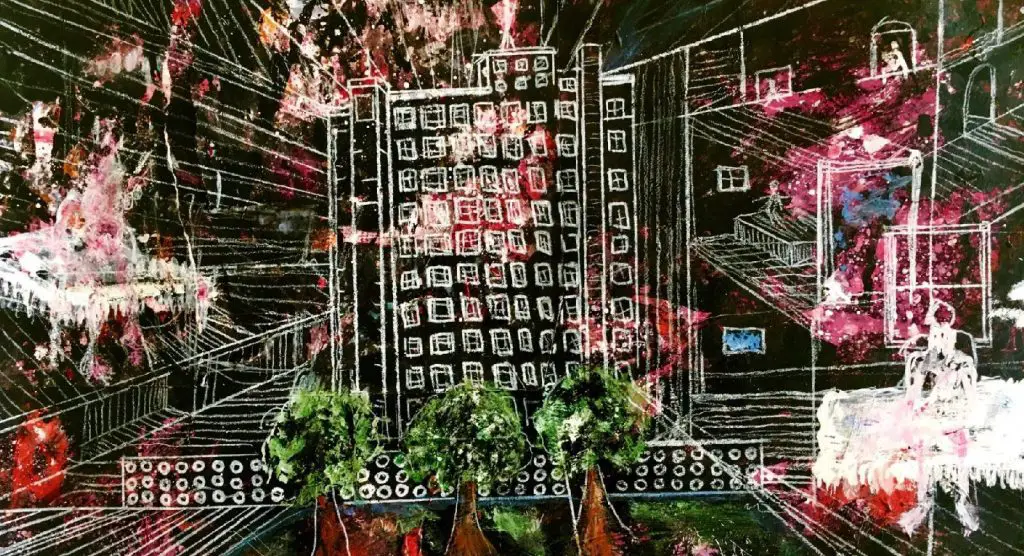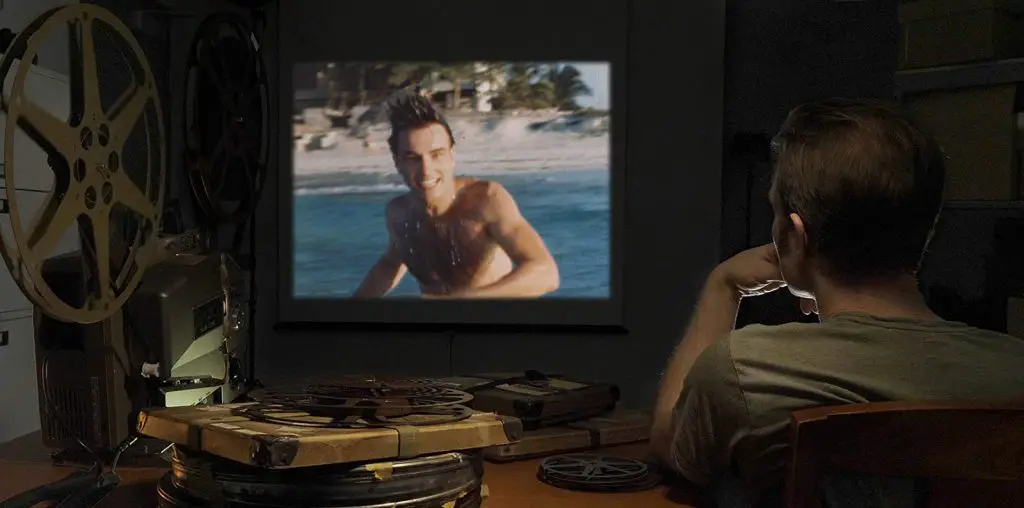
BOOTLEG FILES 495: “Chelsea Girls” (1966 experimental feature co-directed by Andy Warhol and Paul Morrissey).
LAST SEEN: The full film is on YouTube in an unauthorized posting.
AMERICAN HOME VIDEO: None.
REASON FOR BOOTLEG STATUS: It is kept out of home entertainment release by the Warhol Foundation.
CHANCES OF SEEING A COMMERCIAL DVD RELEASE: It could happen.
When most people cite the classic films of the 1960s, the Andy Warhol-Paul Morrissey feature “Chelsea Girls” is rarely mentioned as being among the decade’s most distinctive offerings. This is fairly strange, considering the sensation it created when it was released in 1966.
Part of the problem in the lack of celebration for “Chelsea Girls” is the fact the production is very difficult to see. To date, there has never been a commercial home entertainment release, and only a few retrospective screenings have been held during the past several years. But thanks to an unauthorized YouTube posting of the entire film, “Chelsea Girls” (which is sometimes referred to as “The Chelsea Girls”) can now be seen by a global contemporary audience – and its value in the development of underground cinema can truly be appreciated.
Beginning in 1963, Warhol collaborated with Morrissey on a series of bizarre (yet intriguing) short films. Many of these films pushed the limits of good taste (as defined by the era) and at least two, “Batman Dracula” and “Vinyl,” played loose with the clearly defined tenets of intellectual property. But most people only knew of these films by reputation, as they were barely seen beyond a few New York City venues that specialized in underground movies.
For “Chelsea Girls,” Warhol and Morrissey initially rounded up several of the boisterous and bizarre personalities that were later known as Warhol’s “superstars” and created a series of films that were based on monologues and dialogues to be shot in the rooms of the New York City’s Chelsea Hotel and at Warhol’s celebrated Factory. Each episode ran for a 35-minute unbroken take and most were completely improvised (a pair of sketches were written by Ron Tavel, though only one was eventually used). Filming took place during the summer of 1966; the filmmakers shot in 16mm, with some sequences in color and others were in black-and-white.
However, Warhol and Morrissey wound up with something of a dilemma. Although two of the episodes were eventually dropped from “Chelsea Girls” (including a segment featuring the doomed diva Edie Sedgwick), the finished film ran a ghastly six-and-a-half hours. In order to salvage their excessive footage, Warhol and Morrissey created an ingenious solution: the screen would be split in half, with two films running concurrently at the same time. Since the sound projection for two simultaneous films would have been an acoustic mess, it was decided that one of the films would be shown silent while the soundtrack for the on-screen partner was played. The resulting film ran three-and-a-quarter hours – half the length of the single screen presentation, but still quite an epic length for a series of one-room talkathons.
At first, “Chelsea Girls” starts off on a strange note. The right half of the screen is an episode that was shot in a kitchen, where Nico is trimming her blonde hair while conversing with Eric Emerson. A little boy (Nico’s real-life son Ari) is with them. But the sound recording is poor and there is almost no action beyond Nico’s self-barbering. Shortly after that episode begins, the left side of the screen is dominated by Ondine, who plays a hostile priest (or is he really the pope?) in a heated conversation with a less-than-reverential Ingrid Superstar. The Nico soundtrack eventually shuts off as Ondine and Ingrid engage in a wild and raw conversation that has a stronger soundtrack.
But slowly, the unlikely marriage of these two episodes creates a strange marriage. The pairing of footage with the swarthy and strident Ondine against the blonde and silently ethereal Nico offers a funky yin-yang experience. And while Ondine’s harsh voice commands the soundtrack, it is the silent Nico that keeps catching the viewer’s attention – her golden presence truly outshines the noisy fracas occurring on the neighboring frame.
From there, “Chelsea Girls” unleashes a zany and sometimes harrowing journey into behavior that was considered nihilistic during the mid-1960s. The zaftig Brigid Polk waves hypodermic needles full of amphetamines while engaging in a weird telephone call. On the neighboring screen, two men share a bed, only to have their horizontal idyll interrupted by playful visitors. After that, Mary Woronov appears as the virago Hanoi Hannah, who bullies other women (including International Velvet) in a pair of concurrent sketches.
The next duet of episodes finds a homosexual couple in bed, where transvestite Mario Montez arrives to serenade them. The bedmates react with severe insults, causing their cross-dressing singer to become agitated. In the neighboring film, Gerard Malanga is lectured by his disapproving mother (Marie Menken) while his girlfriend watches in disbelief.
After that, blonde himbo Eric Emerson engages in a babbling, narcotized monologue before stripping away his clothing. In the neighboring episode, Emerson and the other cast members are bathed in color lights and look blankly around them.
“Chelsea Girls” ends with the reteaming of Ondine as the angry clergyman (this time spouting some fairly profane dialogue and physically assaulting a female co-star) and Nico as the screen goddess. This time, however, Nico is crying softly to herself – and when her segment’s soundtrack emerges, we hear that Nico is playing the Velvet Underground’s music as her tears lightly flow.
Warhol biographer Victor Bokris brilliantly summed up the effect that Warhol and Morrissey achieved: “The juxtaposition of actors and action, color and black and white, sound and silence gave ‘Chelsea Girls’ a visually beautiful impact as well as a schizophrenic effect, especially when the same players appeared in two reels running next to each other exposing different aspects of their personalities, and turned it into something much greater than the individual films alone.”
Jonas Mekas premiered “Chelsea Girls” on September 15, 1966 at the Film-Makers’ Cinematheque in New York City. Word of mouth on the film quickly led to sold out shows, and Mekas picked up theatrical distribution rights for through his Film-Maker’s Distribution Center. The film was booked at Cinema Rendezvous, a first-run New York theater, and opened in December for a two-week run; it later moved to other theaters around the city before securing engagements in major U.S. cities during 1967. It was also shown at the Cannes Film Festival. In Boston, the film’s exhibition was shut down by the police vice squad – Ondine’s quickly quoted line of “Approach the crucifix, lift His loincloth and go about your business” was among the obscenities cited in the closure.
Critical reaction to the film was wildly mixed. Fuddy-duddy critics loathed it – Rex Reed called it “three and a half hour cesspool of vulgarity and talentless confusion which is about as interesting as the inside of a toilet bowl,” while Roger Ebert sneered that Warhol was “employing perversion and sensation like chili sauce to disguise the aroma of the meal.” Yet well-respected director Shirley Clarke proclaimed that she was “continually haunted by the movie’s beauty and power,” while Newsweek’s Jack Kroll insisted it was a “fascinating and significant movie event.” J. Hoberman, writing in the Village Voice, defended the film’s depth and scope by insisting it “has a classical grandeur about it, something from Victor Hugo.”
Hoberman also pointed out that “Warhol’s people are more real than real because the camera encourages their exhibitionism.” Indeed, Warhol tapped into the secret that TV producers would late exploit shamelessly in reality programming – creating over-the-top personalities that can only exist to shock and perplex viewers with their brash and reckless antics.
Despite the mixed critical observations, the film scored a commercial hit and was a landmark achievement in the acceptance of underground cinema by mainstream movie audiences. In the early 1970s, however, Warhol withdrew “Chelsea Girls” and his other films from circulation. Part of this situation could be traced to copyright protection – the theatrical print of “Chelsea Girls” lacked a copyright notice, thus dooming it immediately to public domain status. However, the Warhol Foundation and Morrissey secured a copyright for the version that was released on Italian DVD in 2003.
But because “Chelsea Girls” dropped from sight, its importance within the underground film movement diminished over time – hey, you can’t praise what you can’t see. Outside of the film critics who saw it during its initial run, it remained an unknown quantity to most film lovers. Even the folks at the Library of Congress seemed to forget about the film’s historic value, placing Warhol’s monotonous “Empire” on the National Film Registry instead of the more provocative “Chelsea Girls.”
To date, that Italian release is the only home entertainment presentation of “Chelsea Girls.” There has been no word on when (or if) this work will ever turn up on American DVD and Blu-ray. Until such time, there is the YouTube posting that went online in March. And until that gets yanked, Warhol fans can now experience the master’s most remarkable film achievement.
IMPORTANT NOTICE: The unauthorized duplication and distribution of copyright-protected material, either for crass commercial purposes or profit-free s***s and giggles, is not something that the entertainment industry appreciates. On occasion, law enforcement personnel boost their arrest quotas by collaring cheery cinephiles engaged in such activities. So if you are going to copy and distribute bootleg material, a word to the wise: don’t get caught. Oddly, the purchase and ownership of bootleg DVDs is perfectly legal. Go figure!



Going to college in the 80’s a Chelsea Girl was the British equivalent of a Blonde. For example – Q: A brunette and a Chelsea Girl jump off a building at the same time. Which one lands first? A: the brunette because the Chelsea Girl would need directions 😛